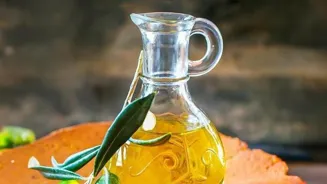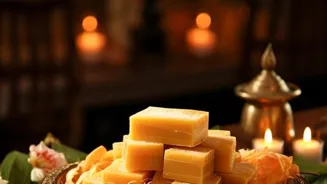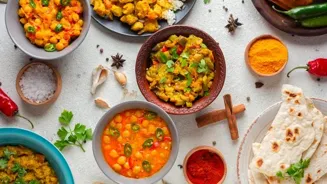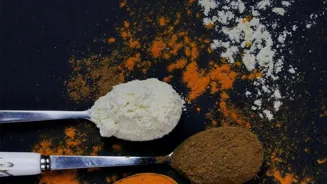Discover the world of Indian cooking oils and elevate your culinary creations! From the rich tradition of ghee to the tropical treat of coconut oil, explore 10 varieties that will transform your dishes.
Read on to enhance your cooking experience!
Namaste, food lovers! Indian cuisine, a vibrant tapestry of flavors and aromas, owes much of its character to the cooking oils used. Choosing the right oil isn't just about frying; it's about enhancing the taste, texture, and nutritional profile of your dishes.
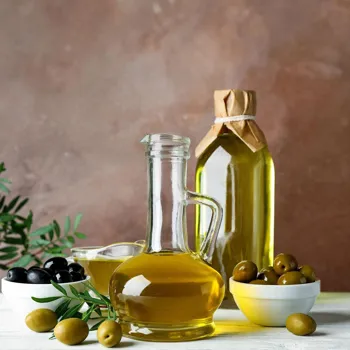
With a plethora of options available in the market, it can be a tad confusing to pick the perfect match for your culinary creations. So, let's dive into the world of Indian cooking oils and explore 10 varieties that will elevate your cooking to new heights.
From the age-old tradition of using ghee to the modern popularity of olive oil, we'll cover it all. Prepare to embark on a flavorful journey!
Ghee: The Golden Elixir
Ghee, or clarified butter, holds a special place in Indian cuisine and culture. It's made by simmering butter until all the water evaporates, leaving behind pure butterfat. Ghee has a rich, nutty flavor and a high smoke point, making it ideal for deep-frying, sautéing, and tempering (tadka).
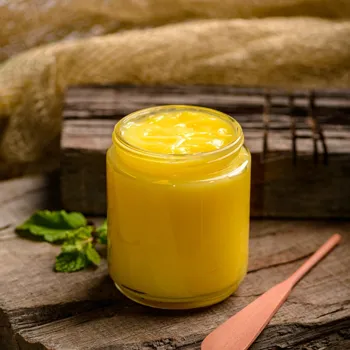
It's also considered to be auspicious and is often used in religious ceremonies and traditional remedies. Beyond its culinary uses, ghee is believed to have numerous health benefits in Ayurveda, including promoting digestion and boosting immunity.
Its distinctive aroma adds a touch of nostalgia and authenticity to dishes like dal makhani, biryani, and sweets like ladoos. Using good quality ghee can truly transform your cooking experience.
Mustard Oil: The Pungent Powerhouse
Mustard oil, with its strong, pungent flavor, is a staple in Eastern and Northern India. It's extracted from mustard seeds and has a distinct aroma that can be quite intense.
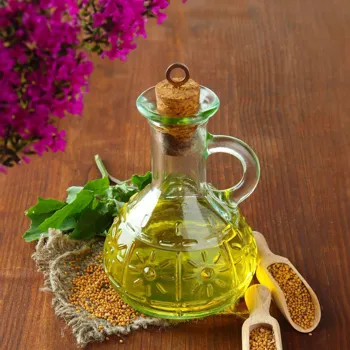
Mustard oil is rich in monounsaturated fatty acids and omega-3 fatty acids, making it a healthy choice when used in moderation. It's commonly used for pickling, stir-frying, and cooking vegetables and fish.
Before using mustard oil, it's often recommended to heat it to its smoking point to reduce its pungency. Its unique flavor profile adds a special character to dishes like aloo posto, macher jhol, and various vegetable curries.
If you are a fan of bold flavors, mustard oil is definitely worth exploring.
Groundnut Oil: The Versatile Veteran
Groundnut oil, also known as peanut oil, is a versatile and affordable option for Indian cooking. It has a neutral flavor and a high smoke point, making it suitable for deep-frying, sautéing, and everyday cooking. Groundnut oil is a good source of vitamin E and antioxidants.
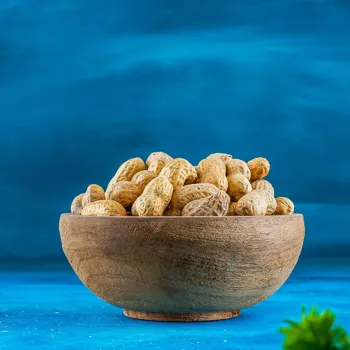
It's widely used in South India for dishes like dosas, vadas, and bondas. Its mild flavor doesn't overpower the other ingredients, allowing the natural flavors of the dish to shine through. Whether you're making crispy pakoras or a simple vegetable stir-fry, groundnut oil is a reliable choice.
Coconut Oil: The Tropical Treat
Coconut oil, extracted from coconuts, is a popular choice in South Indian and coastal cuisine. It has a distinct tropical aroma and flavor that adds a unique dimension to dishes.
Coconut oil is available in both refined and unrefined varieties; unrefined coconut oil retains more of its natural flavor and aroma. It's used for cooking, baking, and even as a hair and skin conditioner.
Coconut oil is known for its medium-chain triglycerides (MCTs), which are believed to have various health benefits. From coconut rice and vegetable curries to sweet treats like payasam, coconut oil brings a taste of the tropics to your kitchen.
Sunflower Oil: The Light and Healthy Choice
Sunflower oil is a light and neutral-tasting oil that's widely used in Indian kitchens. It's extracted from sunflower seeds and is a good source of vitamin E and linoleic acid. Sunflower oil has a high smoke point, making it suitable for deep-frying and stir-frying.

It's a versatile option for everyday cooking and is often preferred for its affordability and availability. Sunflower oil is a good choice for those looking for a healthy and neutral-flavored oil that won't overpower the other ingredients in their dishes.
It works well in a variety of Indian recipes, from vegetable preparations to snacks.
Rice Bran Oil: The Heart-Healthy Option
Rice bran oil, extracted from the outer layer of rice grain, is gaining popularity for its health benefits and neutral flavor. It's rich in oryzanol, an antioxidant that's believed to help lower cholesterol levels.

Rice bran oil has a high smoke point and is suitable for deep-frying, sautéing, and stir-frying. It's a good source of vitamin E and essential fatty acids. Rice bran oil is a versatile option for Indian cooking and can be used in a variety of dishes.
Its neutral flavor allows the natural flavors of the ingredients to shine through, making it a great choice for those looking for a healthy and versatile cooking oil.
Sesame Oil: The Nutty Delight
Sesame oil, extracted from sesame seeds, has a distinct nutty flavor and aroma. It's commonly used in Asian cuisine, including some Indian dishes. Sesame oil is rich in antioxidants and essential fatty acids.
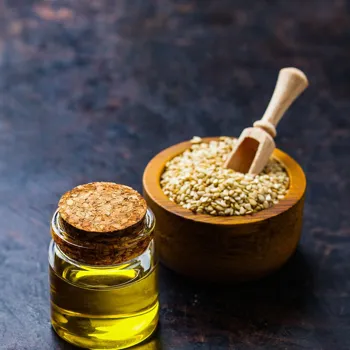
It's available in both light and dark varieties; dark sesame oil has a stronger flavor and is often used for finishing dishes. In Indian cooking, sesame oil is used in pickles, chutneys, and some vegetable preparations. Its nutty flavor adds a unique depth to the dishes.
A dash of sesame oil can enhance the flavor of your favorite recipes.
Olive Oil: The Mediterranean Marvel
Olive oil, a staple in Mediterranean cuisine, is also finding its way into Indian kitchens. Extra virgin olive oil (EVOO) is the highest quality olive oil and has a distinct flavor and aroma. It's best used for drizzling, salad dressings, and low-heat cooking.
Refined olive oil has a higher smoke point and can be used for sautéing and stir-frying. Olive oil is a good source of monounsaturated fatty acids and antioxidants. While not traditionally used in Indian cooking, olive oil can be a healthy and flavorful option for some dishes.
Its health benefits make it a popular choice.
Canola Oil: The All-Purpose Option
Canola oil is a neutral-tasting and affordable oil that's widely used in cooking. It's extracted from rapeseed and has a high smoke point, making it suitable for deep-frying, sautéing, and baking. Canola oil is a good source of monounsaturated fatty acids and omega-3 fatty acids.
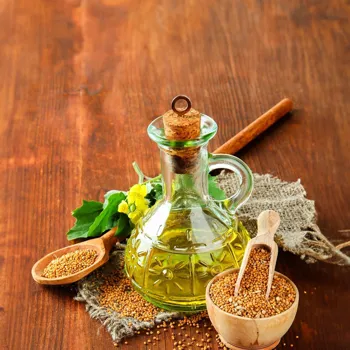
It's a versatile option for everyday cooking and can be used in a variety of Indian dishes. Its neutral flavor doesn’t interfere with the other ingredients, ensuring the overall dish remains balanced. It is a great choice.
Vegetable Oil Blends: The Convenient Choice
Vegetable oil blends are a convenient and affordable option for everyday cooking. These blends typically consist of a combination of different vegetable oils, such as soybean oil, sunflower oil, and rice bran oil.
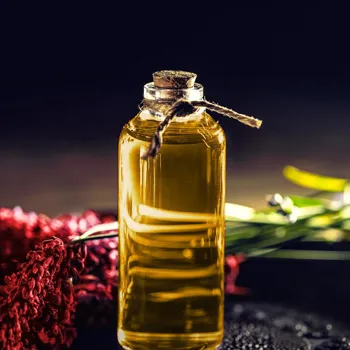
They have a neutral flavor and a high smoke point, making them suitable for deep-frying, sautéing, and stir-frying. While vegetable oil blends may not offer the same distinct flavor profiles as single-source oils, they are a practical and budget-friendly choice for many households.
They are widely available and suitable for most cooking needs.
AI Generated Content. Glance/InMobi shall have no liability for the content
